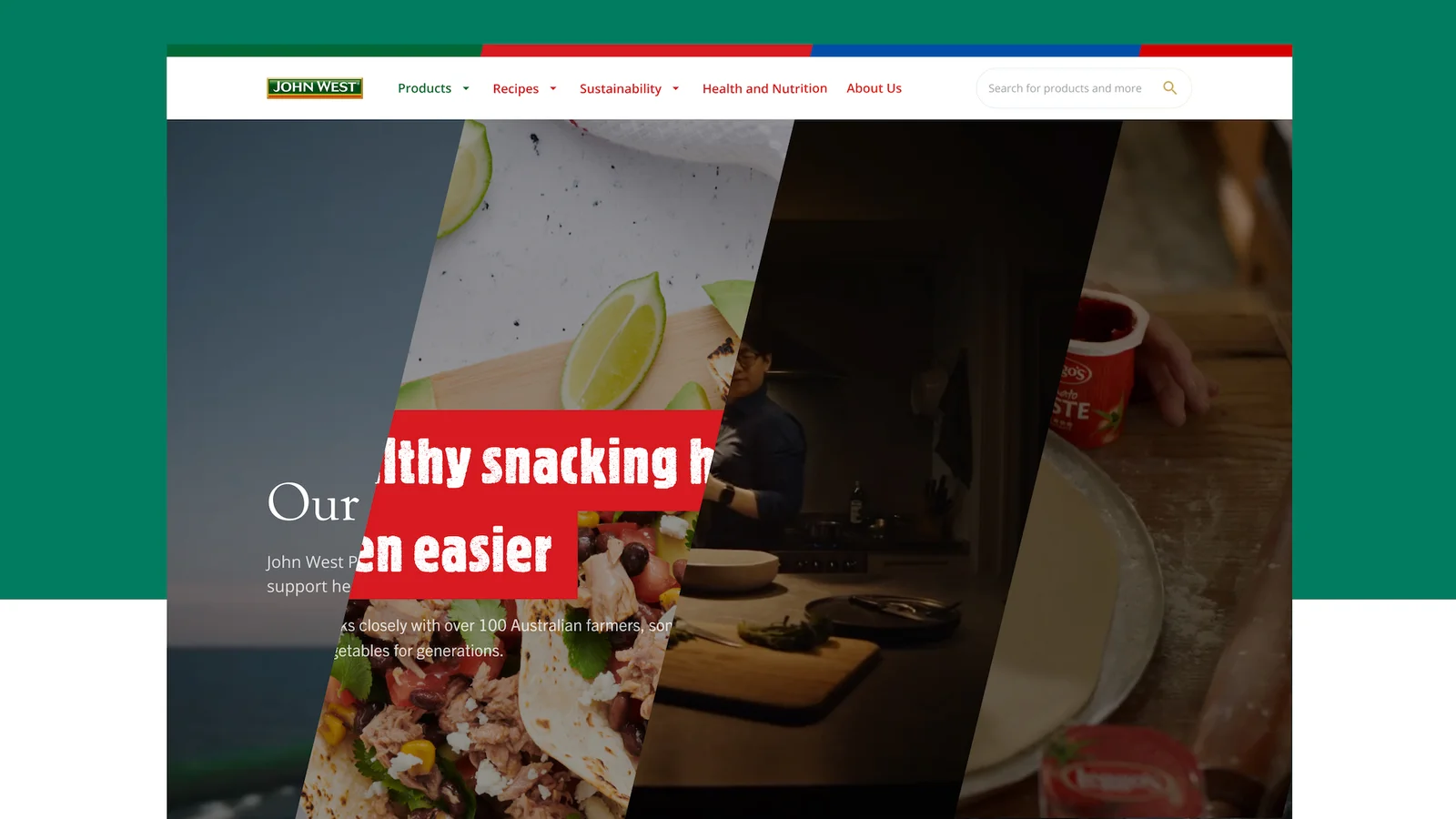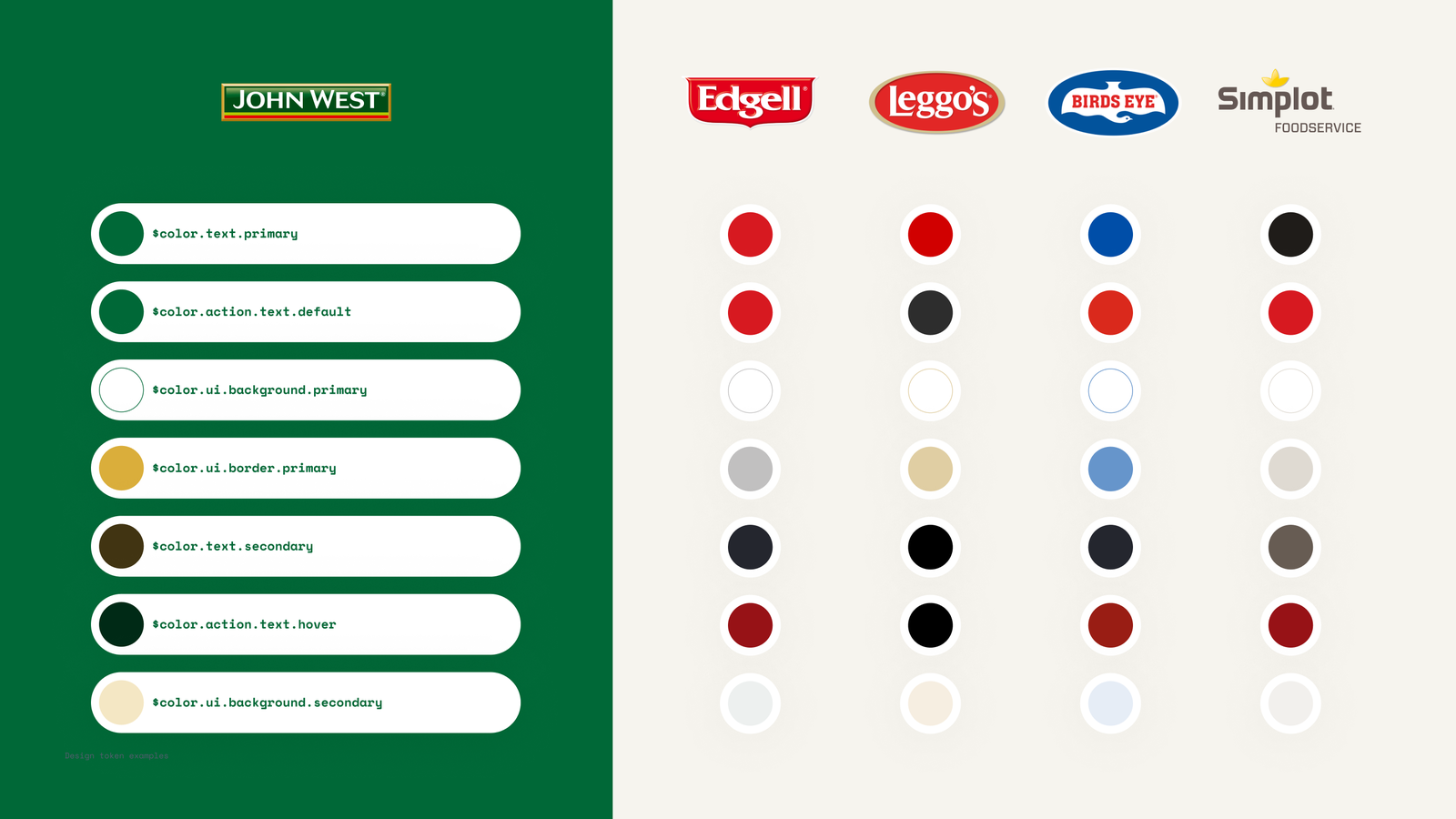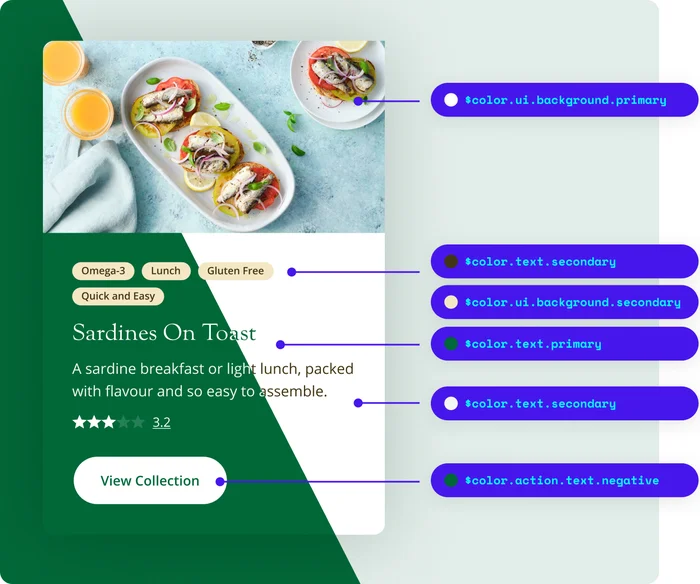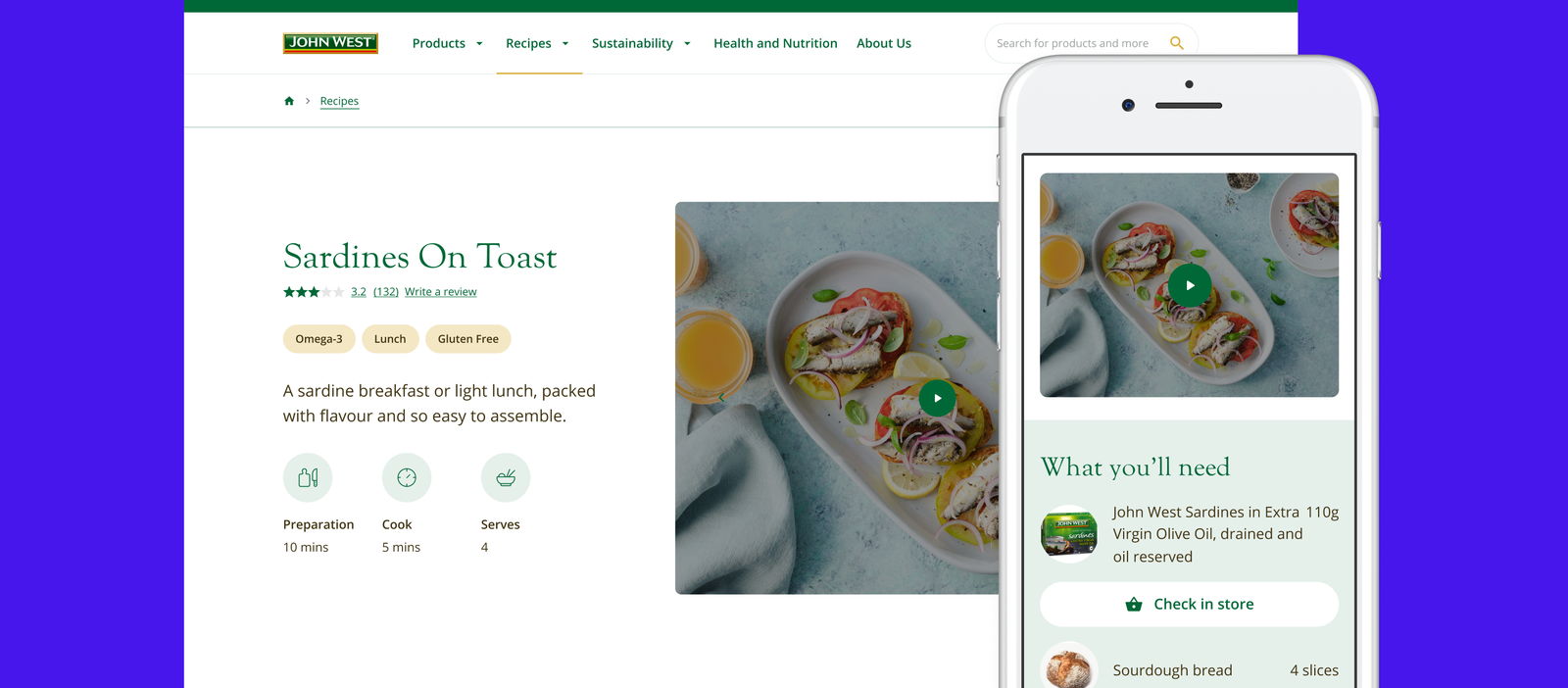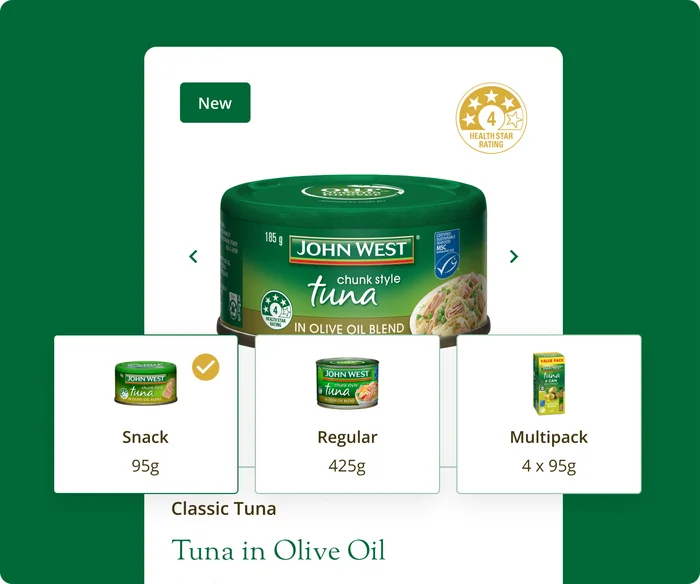Keep Reading
Want more? Here are some other examples of our work that you might be interested in.
[{"itemId":"7292c167-216b-40fe-bc19-72fa0c79cddd","title":"Australian Centre for the Prevention of Cervical Cancer","introduction":"The Australian Centre for the Prevention of Cervical Cancer (ACPCC) is Australia’s leading organisation for cervical cancer prevention.","linkUrl":"/australian-centre-for-the-prevention-of-cervical-cancer","img":{"src":"https://assets-us-01.kc-usercontent.com:443/90e79cae-25c6-00b5-6f5b-27efe5c250ab/3e2de707-d319-4335-b6b4-65efd2cf1137/ACPCC-Hero%20Banner.jpg?h=350&fm=webp","alt":"Doctor with patient","width":1945,"height":1094},"lastModified":"2023-04-14T06:50:17.8514631Z","codeNameHeroImage":"hero_image","codeNameTitle":"title"},{"itemId":"6904c7d6-ba06-4fda-8921-ea2b8dc46fab","title":"AusAppPathways App","introduction":"The Australian Apprenticeships and Traineeships Information Service needed to create a mobile-friendly tool to help people make their chosen career a reality.","linkUrl":"/ausapppathways-app","img":{"src":"https://assets-us-01.kc-usercontent.com:443/90e79cae-25c6-00b5-6f5b-27efe5c250ab/dc0e3561-a903-44a4-9fa8-44bb1f493144/10_hero-project_AusPathway.jpg?h=350&fm=webp","alt":"Four young people looking at their mobile phones","width":1600,"height":900},"lastModified":"2023-09-19T04:55:11.7152136Z","codeNameHeroImage":"hero_image","codeNameTitle":"title"},{"itemId":"a276d0b9-3b6a-4e40-9537-725498795d1c","title":"Avant","introduction":"Avant’s website rebuild has resulted in a comprehensive portal that serves as a premier destination for healthcare professionals.","linkUrl":"/avant","img":{"src":"https://assets-us-01.kc-usercontent.com:443/90e79cae-25c6-00b5-6f5b-27efe5c250ab/263d52e0-91a1-4d7d-b50a-d4cd46392460/template-feature_hero%402x.png?h=350&fm=webp","alt":"A doctor sitting in a chair","width":3840,"height":2160},"lastModified":"2024-04-23T08:33:01.3349188Z","codeNameHeroImage":"hero_image","codeNameTitle":"title"},{"itemId":"2efe1f62-b4a8-43e5-b921-7a69eaf6e74d","title":"Beyond Blue","introduction":"Beyond Blue needed to transition away from a legacy CMS which was preventing it from supporting the mental health of the community in the best possible way.","linkUrl":"/beyond-blue","img":{"src":"https://assets-us-01.kc-usercontent.com:443/90e79cae-25c6-00b5-6f5b-27efe5c250ab/303bd2df-8a43-4b70-a964-bac351634fee/BB-case-study-hero.png?h=350&fm=webp","alt":"Picture of a person standing under an umbrella with rain","width":1440,"height":810},"lastModified":"2024-06-17T03:35:12.5785331Z","codeNameHeroImage":"hero_image","codeNameTitle":"title"},{"itemId":"54c5eb55-48f9-4b06-97d6-1d2107f993ba","title":"BYD Discovery ","introduction":"Electric vehicle manufacturer BYD engaged Luminary to provide it with a digital strategy to enhance its online presence and consolidate its positioning as a leading EV brand in the Australian market.","linkUrl":"/byd-discovery","img":{"src":"https://assets-us-01.kc-usercontent.com:443/90e79cae-25c6-00b5-6f5b-27efe5c250ab/0205c39b-1425-4ef4-9e3e-01acb97c8727/BYD-Hero%20Banner.jpg?h=350&fm=webp","alt":"BYD cars","width":2880,"height":1620},"lastModified":"2025-03-07T03:18:02.9757025Z","codeNameHeroImage":"hero_image","codeNameTitle":"title"},{"itemId":"a0d0ba93-26c4-4157-a7fc-a24adaabca14","title":"Cancer Council Australia","introduction":"Cancer Council is the nation’s leading cancer charity, and the only Australian charity working across every aspect of every cancer.","linkUrl":"/cancer-council-australia","img":{"src":"https://assets-us-01.kc-usercontent.com:443/90e79cae-25c6-00b5-6f5b-27efe5c250ab/39fbad39-8379-4682-b59a-027402a9f3c7/CC-%20Hero%20Banner.jpg?h=350&fm=webp","alt":"Lady with cup of tea laughing","width":1945,"height":1094},"lastModified":"2023-09-19T05:19:55.8820686Z","codeNameHeroImage":"hero_image","codeNameTitle":"title"},{"itemId":"f7258f07-ad22-4d17-acb8-42152ecf91d9","title":"Yarra City Council","introduction":"The City of Yarra is a local government area (LGA) in the inner eastern and northern suburbs of Melbourne, with a population of 91,543 residents. Some of Melbourne’s most iconic suburbs belong to the City of Yarra, including Richmond, Collingwood, Fitzroy and Carlton North.","linkUrl":"/yarra-city-council","img":{"src":"https://assets-us-01.kc-usercontent.com:443/90e79cae-25c6-00b5-6f5b-27efe5c250ab/350cd4e5-a619-4c97-9fba-8097289b2e05/yarraCity-case-study-hero.jpg?h=350&fm=webp","alt":"Picture of a government city council","width":1440,"height":810},"lastModified":"2023-11-23T23:56:32.5942493Z","codeNameHeroImage":"hero_image","codeNameTitle":"title"},{"itemId":"ca642e38-73cd-4512-83eb-aefad7bb051f","title":"Clipsal by Schneider Electric","introduction":"Clipsal needed a fresh new website to optimise the user experience and better showcase its product range.","linkUrl":"/clipsal-new","img":{"src":"https://assets-us-01.kc-usercontent.com:443/90e79cae-25c6-00b5-6f5b-27efe5c250ab/2b6ea146-defd-483e-8a72-f2919f3492c5/Clipsal_CaseStudy_16x9_hero.jpg?h=350&fm=webp","alt":"Clipsal on a laptop","width":1440,"height":810},"lastModified":"2023-09-19T05:19:17.564572Z","codeNameHeroImage":"hero_image","codeNameTitle":"title"},{"itemId":"c327ec2c-97c3-48a5-8c21-aaf57176ea06","title":"Global portfolio prioritisation for Schneider Electric","introduction":"Luminary was engaged to improve Schneider Electric's management of the digital portfolio across different teams and countries to enhance visibility and reduce the time in which jobs and ideas are assigned and completed.","linkUrl":"/portfolio-prioritisation-schneider-electric","img":{"src":"https://assets-us-01.kc-usercontent.com:443/90e79cae-25c6-00b5-6f5b-27efe5c250ab/ee311036-6c38-4bff-a78b-8cb9d94027f4/SE%2BJiraAtlassian-Hero%20Banner%20%281%29.jpg?h=350&fm=webp","alt":"Picture of the Jira platform for Schneider Electric","width":1200,"height":675},"lastModified":"2023-06-05T04:24:42.0001936Z","codeNameHeroImage":"hero_image","codeNameTitle":"title"},{"itemId":"235bb343-860b-4fbb-a1cd-6ba86858d339","title":"Clipsal Electrical Design Application","introduction":"The Clipsal Electrical Design Application is a web-based app that enables professional consultants to help homeowners who are building or renovating to tailor their electrical, lighting and smart home plans and bring them to life.","linkUrl":"/clipsal-electrical-design-application","img":{"src":"https://assets-us-01.kc-usercontent.com:443/90e79cae-25c6-00b5-6f5b-27efe5c250ab/0d63608d-c923-4748-8156-b1a0c95226b5/Clipspec-Hero-Banner.jpg?h=350&fm=webp","alt":"Clipspec floor plan","width":1945,"height":1094},"lastModified":"2023-09-19T04:40:21.6727675Z","codeNameHeroImage":"hero_image","codeNameTitle":"title"},{"itemId":"f30e3b27-4ea5-4191-ad68-c9382c0a2c51","title":"Crown Gifts","introduction":"Crown Gifts is an e-commerce site owned by Crown Resorts. Luminary replatformed the site onto Kentico 13 to bring it into line with Crown’s other digital assets.","linkUrl":"/crown-gifts","img":{"src":"https://assets-us-01.kc-usercontent.com:443/90e79cae-25c6-00b5-6f5b-27efe5c250ab/92ecda73-4001-4b55-8d0f-8bc30e209ba5/Crown-Hero%20Banner.png?h=350&fm=webp","alt":"Crown Gifts hero","width":1440,"height":810},"lastModified":"2024-10-24T04:31:24.341492Z","codeNameHeroImage":"hero_image","codeNameTitle":"title"},{"itemId":"55b8f715-7f48-4853-b293-a6b9436b7a3e","title":"Fandelo","introduction":"Fandelo is a social engagement platform that fosters fan-based communities centred around sports, music and entertainment.","linkUrl":"/fandelo","img":{"src":"https://assets-us-01.kc-usercontent.com:443/90e79cae-25c6-00b5-6f5b-27efe5c250ab/f9676f92-8333-4452-8507-9979803bde23/template-feature_hero.png?h=350&fm=webp","alt":"Fandelo hero image","width":1600,"height":900},"lastModified":"2023-11-14T00:20:50.5703596Z","codeNameHeroImage":"hero_image","codeNameTitle":"title"},{"itemId":"25e577e6-0283-43be-8338-1484b84466ef","title":"Fleet Plant Hire","introduction":"Fleet Plant Hire is a trusted leader with a continually growing database of over 2,500 registered earthmoving contractors, offering a wide range of highly skilled and industry-compliant operators and plant equipment to meet the needs of small and large projects.","linkUrl":"/fleet-plant-hire","img":{"src":"https://assets-us-01.kc-usercontent.com:443/90e79cae-25c6-00b5-6f5b-27efe5c250ab/79d501b9-2371-40ba-a48f-a35c2eb1e762/Screen%20Shot%202023-04-03%20at%208.42.43%20pm.png?h=350&fm=webp","alt":"Picture of a tractor grid in the soil","width":1916,"height":1070},"lastModified":"2023-04-17T04:01:17.5124645Z","codeNameHeroImage":"hero_image","codeNameTitle":"title"},{"itemId":"14bb417f-7217-41ec-8a86-692071800864","title":"FlexSelect","introduction":"Schneider Electric was looking for a tool that would completely revolutionise the way it went to market with its electrical distribution boards.","linkUrl":"/flexselect","img":{"src":"https://assets-us-01.kc-usercontent.com:443/90e79cae-25c6-00b5-6f5b-27efe5c250ab/3c45d90d-1238-42df-bfac-dc167428f134/05_hero-project_FlexSelect.jpg?h=350&fm=webp","alt":"Image show FlexSelect application on a tablet","width":1600,"height":900},"lastModified":"2023-09-19T04:54:28.2251678Z","codeNameHeroImage":"hero_image","codeNameTitle":"title"},{"itemId":"bc592cd9-0f23-4ad0-8bbc-e95cfa8632ca","title":"Fuso","introduction":"Fuso approached Luminary seeking to significantly improve customer engagement through the enablement of personalised product matching, and a greatly enhanced enquiry experience.","linkUrl":"/fuso","img":{"src":"https://assets-us-01.kc-usercontent.com:443/90e79cae-25c6-00b5-6f5b-27efe5c250ab/89178797-7c07-442c-be2a-2050db5801a2/Fuso-Hero%20Banner.png?h=350&fm=webp","alt":"Fuso truck on a bridge","width":1600,"height":900},"lastModified":"2023-06-27T02:09:05.5286584Z","codeNameHeroImage":"hero_image","codeNameTitle":"title"},{"itemId":"0fda0ea4-1bc3-418c-b998-18ad3bb68085","title":"GroundProbe ","introduction":"Luminary and GroundProbe partnered on a discovery project to design a new application experience for GroundProbe engineers to analyse and monitor risks on site.","linkUrl":"/groundprobe","img":{"src":"https://assets-us-01.kc-usercontent.com:443/90e79cae-25c6-00b5-6f5b-27efe5c250ab/0ca7873f-3c5e-4fea-8173-70d07b752147/Ground%20Probe-Hero%20Banner.jpg?h=350&fm=webp","alt":"Mining worksite","width":2880,"height":1620},"lastModified":"2024-11-28T01:27:39.3502139Z","codeNameHeroImage":"hero_image","codeNameTitle":"title"},{"itemId":"63901126-7597-4454-88e4-dcf7ca361ccc","title":"Healthylife ","introduction":"Healthylife – part of the Woolworths Group – is a digital startup that provides customers with health and wellness advice, services and products.","linkUrl":"/healthylife","img":{"src":"https://assets-us-01.kc-usercontent.com:443/90e79cae-25c6-00b5-6f5b-27efe5c250ab/5a07b98e-f311-4727-906d-e74187f084e3/HL-Hero%20Banner%402x.jpg?h=350&fm=webp","alt":"HealthyLife website ","width":3890,"height":2188},"lastModified":"2024-06-24T05:59:38.0249316Z","codeNameHeroImage":"hero_image","codeNameTitle":"title"},{"itemId":"55c065d3-db62-4bb2-84b1-7bacace40046","title":"IFM Investors","introduction":"IFM Investors appointed Luminary to deliver a new corporate website to deliver on the needs of its growing international audience.","linkUrl":"/ifm-investors","img":{"src":"https://assets-us-01.kc-usercontent.com:443/90e79cae-25c6-00b5-6f5b-27efe5c250ab/34126cdc-4f85-4045-bb4c-435c17e4c25b/ifminvestors04.jpg?h=350&fm=webp","alt":"IFM hero image","width":1600,"height":900},"lastModified":"2023-09-01T03:00:22.6360227Z","codeNameHeroImage":"hero_image","codeNameTitle":"title"},{"itemId":"e19b368d-2d38-4c11-aca9-73e998265725","title":"legalsuper","introduction":"legalsuper approached Luminary following a significant brand refresh and was faced with the predicament of redesigning and redeveloping their existing website or investing in a new build on a more suitable technical platform to suit their future needs.","linkUrl":"/legalsuper","img":{"src":"https://assets-us-01.kc-usercontent.com:443/90e79cae-25c6-00b5-6f5b-27efe5c250ab/30b520bb-72ac-4aa1-8daf-cd6d9da40249/OPTION%202.png?h=350&fm=webp","alt":"Picture of legalsuper team in a meeting in black and white","width":1321,"height":744},"lastModified":"2024-11-28T16:54:01.163501Z","codeNameHeroImage":"hero_image","codeNameTitle":"title"},{"itemId":"a351c735-39a5-4f1e-8dbd-2a6d11936442","title":"Magistrates Court of Victoria","introduction":"The Magistrates’ Court of Victoria engaged Luminary to help design a future-state digital service ecosystem.","linkUrl":"/magistrates-court-victoria","img":{"src":"https://assets-us-01.kc-usercontent.com:443/90e79cae-25c6-00b5-6f5b-27efe5c250ab/2db8f116-bc8a-43c7-8dea-660c48c9c1fb/Untitled%20presentation.jpg?h=350&fm=webp","alt":"Picture of the Melbourne Magistrates Court","width":960,"height":540},"lastModified":"2024-03-18T23:54:39.5244922Z","codeNameHeroImage":"hero_image","codeNameTitle":"title"},{"itemId":"8459efcd-4f23-4d5c-9901-8dabd129d029","title":"Melbourne Airport","introduction":"Implemented by Luminary and designed by Hardhat, the Melbourne Airport website is a future-focused digital platform built on headless CMS platform Kontent.ai. ","linkUrl":"/melbourne-airport","img":{"src":"https://assets-us-01.kc-usercontent.com:443/90e79cae-25c6-00b5-6f5b-27efe5c250ab/56bd154d-18c1-4cea-8b9d-b870de68fcf6/MA-feature_hero.png?h=350&fm=webp","alt":"Plane flying overhead","width":2000,"height":1125},"lastModified":"2023-08-15T06:17:29.7896927Z","codeNameHeroImage":"hero_image","codeNameTitle":"title"},{"itemId":"1f9883a2-4afa-4386-be85-9a025cca11ea","title":"Melbourne Airport wayfinding system","introduction":"Streamlining the journey: Melbourne Airport’s new wayfinding system provides travellers with a faster, more efficient airport experience.","linkUrl":"/melbourne-airport-wayfinding-system","img":{"src":"https://assets-us-01.kc-usercontent.com:443/90e79cae-25c6-00b5-6f5b-27efe5c250ab/5c0b4527-7e0d-4941-b104-e882f40a84bb/MA-Hero%20Banner.jpg?h=350&fm=webp","alt":"A man walking through Melbourne airport talking into a phone","width":2880,"height":1620},"lastModified":"2024-09-26T07:09:27.3598464Z","codeNameHeroImage":"hero_image","codeNameTitle":"title"},{"itemId":"ab71c768-f80d-4125-ac97-656a514d0ad8","title":"Money3","introduction":"Money3 approached Luminary intending to establish a more solid and recognisable brand and carve out a place in the market amongst leading non-band providers. ","linkUrl":"/money3","img":{"src":"https://assets-us-01.kc-usercontent.com:443/90e79cae-25c6-00b5-6f5b-27efe5c250ab/54815af2-b200-4fa1-804d-40f76d01f998/template-case-study-hero%402x.jpg?h=350&fm=webp","alt":"Picture of two women sitting in the boot of a car","width":1440,"height":810},"lastModified":"2024-03-28T02:05:15.7274531Z","codeNameHeroImage":"hero_image","codeNameTitle":"title"},{"itemId":"c06fe88b-29ab-4b30-8581-89dfc86efed5","title":"Nintendo","introduction":"Nintendo engaged Luminary as its digital partner, with our initial task being to provide front end technology recommendations. Luminary then carried out a full website audit for Nintendo and rebuilt the website on a more modern technology stack.","linkUrl":"/nintendo","img":{"src":"https://assets-us-01.kc-usercontent.com:443/90e79cae-25c6-00b5-6f5b-27efe5c250ab/ab6d04b3-c67a-441c-8eb9-df8988815792/Nintendo-Hero%20Banner.jpg?h=350&fm=webp","alt":"Image of Mario from Nintendo's Mario Bros","width":1440,"height":810},"lastModified":"2025-03-06T06:10:37.5736718Z","codeNameHeroImage":"hero_image","codeNameTitle":"title"},{"itemId":"be572187-3511-4393-9a81-79bad5125c5e","title":"New South Wales Government Headless Content Advisory ","introduction":"The New South Wales Government OneCX Program engaged Luminary for an advisory project on headless CMS. Specifically, they wanted Luminary to clearly define and exhibit headless CMS so that its government agencies were aligned on what it means.","linkUrl":"/new-south-wales-government-headless","img":{"src":"https://assets-us-01.kc-usercontent.com:443/90e79cae-25c6-00b5-6f5b-27efe5c250ab/7e1b3cca-a3b2-480f-83a4-18aef27835f7/dan-freeman-7Zb7kUyQg1E-unsplash%20%281%29.jpg?h=350&fm=webp","alt":"Picture of the NSW Gov landscape","width":1439,"height":810},"lastModified":"2023-11-15T01:52:08.2239086Z","codeNameHeroImage":"hero_image","codeNameTitle":"title"},{"itemId":"4f7cfa9a-b152-40dd-9a5b-f87bab10e21e","title":"Outerspace Design","introduction":"Product design consultancy Outerspace Design sought Luminary’s assistance to design a website that would reflect its contemporary vision and outlook.","linkUrl":"/outerspace-design","img":{"src":"https://assets-us-01.kc-usercontent.com:443/90e79cae-25c6-00b5-6f5b-27efe5c250ab/eb1be2c9-cae2-497d-8b8f-1188dd03a60f/outerspace-case-study-hero.jpg?h=350&fm=webp","alt":"Product design team","width":1440,"height":810},"lastModified":"2023-09-20T23:37:27.5849263Z","codeNameHeroImage":"hero_image","codeNameTitle":"title"},{"itemId":"22d78be3-aa16-4a9f-a590-fd6ab234892b","title":"Pearson Australia Schools","introduction":"Pearson is a leader in the education publishing market, supporting over 25 million students across 70 different countries. The global dominance of this British-founded company has meant that most Australian students have used a Pearson textbook or digital resource as part of their primary, secondary or tertiary schooling.","linkUrl":"/pearson","img":{"src":"https://assets-us-01.kc-usercontent.com:443/90e79cae-25c6-00b5-6f5b-27efe5c250ab/fb5b63f7-14e5-4aa2-b614-5d92875a4eca/PearsonAUK12-feature_hero.png?h=350&fm=webp","alt":"Picture of a student standing in a classroom holding a Pearson textbook","width":3840,"height":2160},"lastModified":"2023-10-23T08:48:34.1692369Z","codeNameHeroImage":"hero_image","codeNameTitle":"title"},{"itemId":"11c0f656-f986-4c93-b2fe-b9026d7f6bcf","title":"Pet Culture","introduction":"Backed by Woolworths and pet insurance specialists PetSure, PetCulture is a new online destination for pet owners.","linkUrl":"/pet-culture","img":{"src":"https://assets-us-01.kc-usercontent.com:443/90e79cae-25c6-00b5-6f5b-27efe5c250ab/40cae930-037d-4400-8a0b-c5cdb0069e85/IC-Hero%20Banner.png?h=350&fm=webp","alt":"Cute dog looking wistful","width":3890,"height":2188},"lastModified":"2023-11-13T03:37:08.0271282Z","codeNameHeroImage":"hero_image","codeNameTitle":"title"},{"itemId":"b911ae4a-7019-4841-a2de-f117eb825fa5","title":"RedZed","introduction":"Empowering borrowers with a transparent digital experience: RedZed partnered with Luminary to deliver a user-centric online experience that addresses the needs of both brokers and direct loan customers.","linkUrl":"/redzed","img":{"src":"https://assets-us-01.kc-usercontent.com:443/90e79cae-25c6-00b5-6f5b-27efe5c250ab/4dda4fa1-774a-4643-81a7-023386e767b8/RedZed-Hero%20Banner.jpg?h=350&fm=webp","alt":"RedZed","width":1440,"height":810},"lastModified":"2025-03-04T05:28:45.2133448Z","codeNameHeroImage":"hero_image","codeNameTitle":"title"},{"itemId":"39093a94-a51a-43e6-b41f-410488bbbbbc","title":"TTI Group (Ryobi)","introduction":"The parent company of household names Ryobi, AEG and Milwaukee, TTI Group, sought Luminary’s assistance to select a future-proof CMS for the re-platforming of eight of its brand websites.","linkUrl":"/tti-group","img":{"src":"https://assets-us-01.kc-usercontent.com:443/90e79cae-25c6-00b5-6f5b-27efe5c250ab/6e14f241-9706-4aaa-9237-29aba853fc41/template-case-study-hero%402x.jpg?h=350&fm=webp","alt":"Picture of a man using a Ryobi power tool in a shed","width":2880,"height":1620},"lastModified":"2024-03-28T06:00:18.8634592Z","codeNameHeroImage":"hero_image","codeNameTitle":"title"},{"itemId":"e1a66d93-3eb8-4343-af7e-c97a3a03b0c5","title":"Save the Children","introduction":"Facilitating story-driven content and a smooth user flow to maximise donations and streamline content administration.","linkUrl":"/save-the-children","img":{"src":"https://assets-us-01.kc-usercontent.com:443/90e79cae-25c6-00b5-6f5b-27efe5c250ab/d2782355-ccfc-41c0-83d0-b25895ff9c8c/StC-hero%20image.jpg?h=350&fm=webp","alt":"Little girl","width":1600,"height":900},"lastModified":"2024-10-24T05:00:28.5790734Z","codeNameHeroImage":"hero_image","codeNameTitle":"title"},{"itemId":"4e79e54c-da94-4a5b-8b0e-63a577e0ff08","title":"SILK Laser Clinics","introduction":"SILK Laser Clinics engaged Luminary to undertake a discovery project that would identify key digital transformation opportunities and lay the foundation for a future-proof online experience.","linkUrl":"/silk-laser-clinics","img":{"src":"https://assets-us-01.kc-usercontent.com:443/90e79cae-25c6-00b5-6f5b-27efe5c250ab/451f6b45-509a-47d0-b967-3788e1c35043/Silk-Hero%20Banner.jpg?h=350&fm=webp","alt":"Image of a Silk Laser clinician at work","width":2880,"height":1620},"lastModified":"2025-03-25T07:50:19.3268631Z","codeNameHeroImage":"hero_image","codeNameTitle":"title"},{"itemId":"788799fe-43b9-42ea-9636-06c3b819f11e","title":"Simplot","introduction":"Simplot has been serving up convenient, balanced meals for decades, found on the shelves of major supermarkets and in the pantries of Australians and New Zealanders.","linkUrl":"/simplot","img":{"src":"https://assets-us-01.kc-usercontent.com:443/90e79cae-25c6-00b5-6f5b-27efe5c250ab/20aecfb6-6ae5-4b18-b128-6c94a7cb8d74/Simplot-Hero%20Banner.jpg?h=350&fm=webp","alt":"Picture of a farmer outdoors holding green beans for Simplot food production","width":1945,"height":1094},"lastModified":"2024-02-06T03:25:34.3485675Z","codeNameHeroImage":"hero_image","codeNameTitle":"title"},{"itemId":"d4e162d6-db25-4d86-b0d9-5c542b06782f","title":"The Fred Hollows Foundation","introduction":"A dynamic, user-first digital experience: Fred Hollows' website transformation delivers a more cohesive, accessible platform to enhance donations and better serve diverse audiences.","linkUrl":"/the-fred-hollows-foundation","img":{"src":"https://assets-us-01.kc-usercontent.com:443/90e79cae-25c6-00b5-6f5b-27efe5c250ab/8417de93-2951-4f08-ba30-4d1a3ef7cab9/FHF-Hero%20Banner.jpg?h=350&fm=webp","alt":"People wearing eye patches","width":2880,"height":1620},"lastModified":"2024-12-02T03:11:01.7342744Z","codeNameHeroImage":"hero_image","codeNameTitle":"title"},{"itemId":"627cab70-3f5b-44be-9507-5a5f94a5bef1","title":"The Salvation Army Discovery Project","introduction":"A deep discovery engagement with Luminary has helped lay the foundations for a far more user-centric website for The Salvation Army.","linkUrl":"/the-salvation-army-discovery-project","img":{"src":"https://assets-us-01.kc-usercontent.com:443/90e79cae-25c6-00b5-6f5b-27efe5c250ab/d6e69bd9-6b01-4d6c-8273-6bfd7ca620d0/salvos-case-study-hero.jpg?h=350&fm=webp","alt":"Woman in high vis vest standing with a box in front of a Salvos truck","width":1440,"height":810},"lastModified":"2023-07-14T01:19:12.8888805Z","codeNameHeroImage":"hero_image","codeNameTitle":"title"},{"itemId":"7dc0e941-ed52-41bd-8c23-55697b418b16","title":"UNICEF Australia","introduction":"UNICEF Australia engaged Luminary to undertake a complete website rebuild, from discovery through to continuous improvement.","linkUrl":"/unicef-australia","img":{"src":"https://assets-us-01.kc-usercontent.com:443/90e79cae-25c6-00b5-6f5b-27efe5c250ab/97ca4e5a-46b0-4184-ba07-a018077b6643/Unicef-Hero%20Banner.png?h=350&fm=webp","alt":"A female UNICEF worker with a child","width":3890,"height":2188},"lastModified":"2023-08-15T06:27:37.5385481Z","codeNameHeroImage":"hero_image","codeNameTitle":"title"}]


